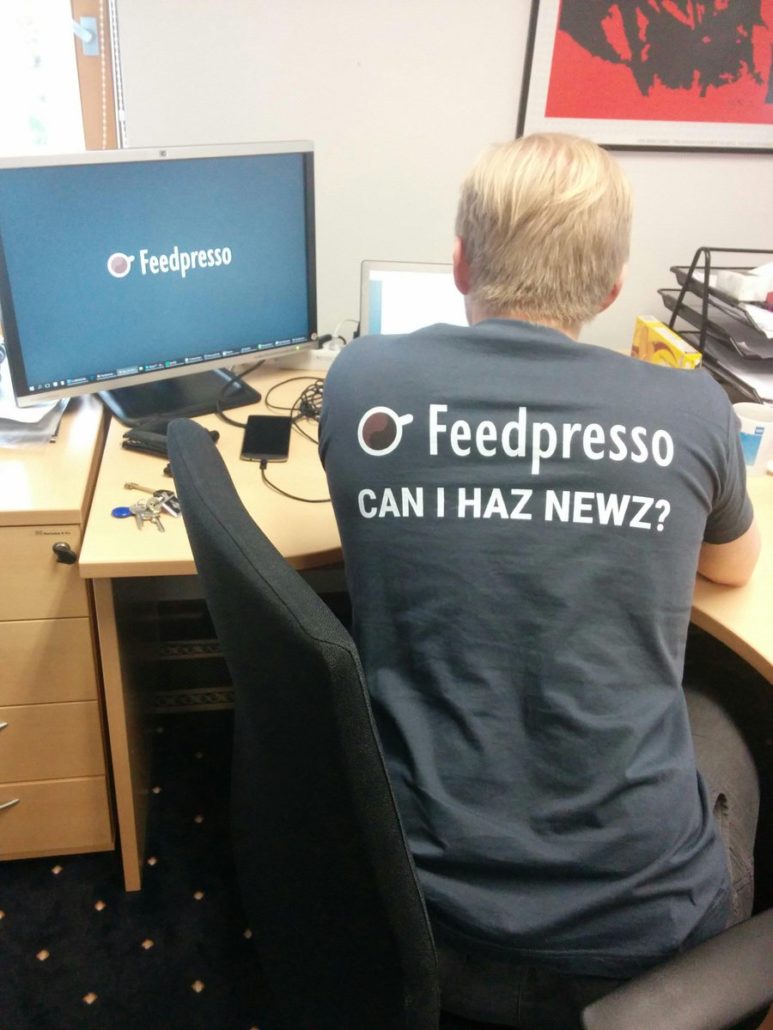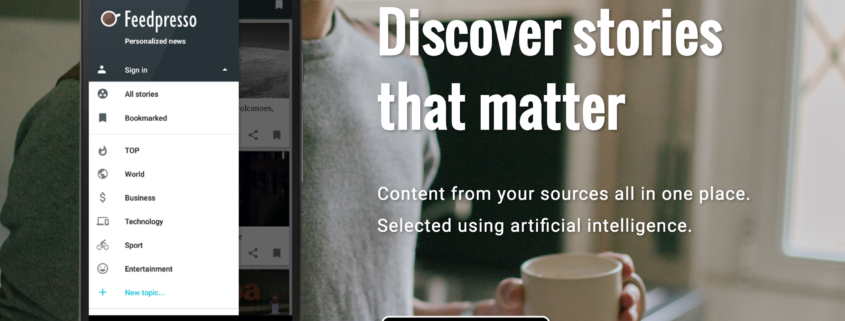Feedpresso: Better News, One Reader at a Time
Tadas Subonis, CEO and founder of FeedPresso joined StartupYard during Batch 7, in early 2017.
At that time, the Feedpresso project was an android app with a small clutch of dedicated users, that helped a person organize and consume the news of the day. It was sort of like Flipboard, but it learned from your reading habits over time to provide a better mix of content you would hopefully find interesting.
Building a content product is a huge challenge, and Feedpresso was no exception. While they rolled out new features, brought feeds online and to iOS, they were bedeviled by the age-old problem of their business model. People who liked the free app didn’t want to pay for it.
So this year, Tadas sat down and wrote an update to shareholders. There would be a significant break in the pattern. Feedpresso would now focus on a very specific kind of customer: the kind that values news enough to pay for the tools to get it. All plans would be paid only.
Feedpresso will reset its strategy, focusing on people in the tech business, who are looking for high performance news aggregation.
I spoke with Tadas last week about the transition, and about his new goals for Feedpresso in 2018. As you’ll see in Tadas’s telling, this transition hasn’t been easy. But today his guiding metrics are not what they were a year ago:

Lloyd: Tell us a bit about your product pivot towards curation and the tech industry.
Tadas: After spending almost a year learning from our failures, we’ve learned (or at least I hope so) that we need to connect with our customers and really dig into their needs, and that’s not possible if we don’t have a very specific person in mind.
We took a look at our audience and ourselves and we realised that a clear audience that we can understand and communicate with is Technology Business professionals. These are people who know the worth of quality content, and are willing to pay to get more out of it.
People that are busy and are in a need of constant updates as the competitive landscape is constantly changing – new best practices, new MAs, and new technologies.
It’s not just about news either.
Another important aspect of the new Feedpresso is that it is a curation tool that helps our customers build their base of knowledge. Organizing and contextualizing timeless content that is important to you is something that’s surprisingly difficult to do with existing solutions.
The way content is presented to us, it has become difficult to give it our full attention, much less to remember it and review it given new information. Whatever is on your feed today is gone tomorrow (or in 5 minutes).
I think that many people feel overwhelmed in today’s culture of newsfeeds and tweets, and unable to really remind themselves of the things they find most important. So we are aiming to help customers contextualize what they read, and build up a record of their knowledge to better understand what they know, and how they know it.
You can see the need for this being met already in other ways, for instance by newsletter curators like Azeem Azhar, who work hard to create a context for modern events that readers can refer to into the future. My feeling is that everyone ought to be able to do that for themselves.
We need to bring back deep reading and reflection.
We’ve even started doing a Technology Business Review newsletter for our customers which turned out to be a success (it has a 70% open rate!). I think this is more evidence that people need more tools to contextualize the content they are consuming and keep track of it.
Lloyd: What’s led you to the decision to shift your focus onto power users?
Tadas: I’ve been made to realize, how true the advice by Paul Graham is: “Build something 100 people love, not something 1 million people kind of like.”
It doesn’t matter if you have a thousand customers if they do not care about your product. It is even worse when they all are so different that you can’t even talk to them, because there is nothing you can ask or say that would be relevant to all of them. Even more, the responses you do get are so diverse that the direction to go next is totally unclear. You end up trying to just get more users, any way you can.
Now I see that this is mostly what happens with freemium news products. They just become a machine for catching eyeballs, just like the content they are helping to spread. They don’t end up helping anyone. They just become another layer in a chain of distractors.
I think that serving the need to get more eyeballs on news feeds has really negatively impacted the people at the end of that process. We see more stuff, of lower quality, and it does have a measurable effect.
We are told that people won’t pay for news, which means news isn’t the product anymore, the readers are the product. I think that’s just not good enough.
I am not alone I think.
Last year while we were at StartupYard, Facebook was still denying that this problem existed. Today they are being much more open about it, and admitting that they’ve made some big mistakes. People are really negatively affected by the toxic environment of falsehood and anger on display now.
That is not saying it’s all terrible. Also in 2017, newspaper subscriptions grew faster than any year in modern history. People want to pay for news again. People want quality, and advertising is supporting quality less and less, so paid news is coming back. This can be a moment where people decide it’s worth it to get the right tools to read the news.
So that’s the environment we are in, and we’re targeting a very selective set of customers, who I think understand this problem well, and want it solved.
We’re pretty much back at square one as a business, and we’ve started rebuilding our audience around this new understanding of the problem we solve. Our advantage this time is that we know what the problem is, and we have the tools in place to build on, and try to solve it.
Lloyd: Are you close to a sustainable business model? How much more work do you need?
Tadas: That’s a good question. I have my eyes set on 1000 paying customers this year. That would make this a sustainable business. 1000 could be a lot, or it could be not very much, depending on how well we execute the next phase.
We have just a core handful of users who made the switch with us to a paid product. We’re learning from them every day.
Our customers have a lot of options to choose from, and even if the alternatives are inferior, it becomes really difficult to stand out in the crowd. This is why I believe a shift to focusing on a core set of customers who know the value of the product well is the only way forward.
Lloyd: What are your next steps for the product?
Tadas: The next step in the product is to fix myself – I still think that there is so much space for improvement in the way we communicate with our customers. Before that is improved, we can’t have a clear direction in the product.
And here I don’t mean clear regarding what new features to add. I think that there is still a gap in the understanding of what fundamental problems our customers have. This news environment is evolving every day, and I don’t think anyone has the answers yet as to how to fix it. But we think we have the right approach, and we have to explore it with our customers.
Lloyd: How can people support the new Feedpresso?
Download us on the App store, or Android, or visit our website at Feedpresso.com to learn more. Get in on the ground floor with a new way of reading the news.




